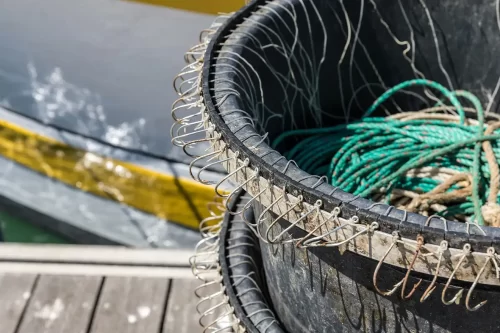The Phoenix Islands Protected Area (PIPA), located in the central Pacific between Hawaii and Australia, is the world’s largest UNESCO World Heritage Site. Spanning a swath of ocean roughly the size of California, its hosts a series of isolated seamounts and almost entirely uninhabited islands, all supporting rich, largely unspoiled ecosystems.On January 1st of 2015, this unique park was officially closed to industrial fishing. But given that the protected area is so huge and isolated, how can we possibly monitor such a park and be sure that that fishing vessels are staying out?
In previous posts on the SkyTruth Blog, we showed how Global Fishing Watch has done exactly that—verifying that most fishing vessels are following the new regulations in the Phoenix Islands. March 11, in the prestigious journal Science, members of the Global Fishing Watch team outline in more detail how this monitoring was possible, and we make policy recommendations that will improve our ability to monitor the rest of the world’s oceans.
The key technology behind Global Fishing Watch is AIS – the “Automatic Identification System” that almost all large ocean-going vessels are required to carry. AIS transponders broadcast a vessel’s location and identity every few seconds to every few minutes. The system was originally designed as a ship-to-ship collision-avoidance system, but now we can use it to track, via satellite, the movements of large fishing vessels across the globe. In the Science paper we outline the strengths and weaknesses of using AIS to track fishing activity.
To get a sense of what we can see using AIS, we created the map shown in a previous post, which displays the movements of all vessels in the world that carry AIS in 2015. To produce this map we processed four and a half billion data points from over 200,000 vessels.
Out of these roughly 200,000 vessels, more than 35,000 are commercial fishing vessels whose movements we can track and analyze. Global Fishing Watch has developed algorithms—and is working to refine these algorithms—that use the movements of fishing vessels to estimate when and where the vessels are placing their hooks and nets. In the paper we show that in the central Pacific, the fishing estimate of our algorithms correlates very well with official, direct observations of fishing.
We then used these algorithms to estimate the apparent fishing activity in the Phoenix Islands Protected Area before and after the closure. Below is a video that shows how the fishing vessels cleared out of the marine reserve. The yellow and white heat map shows the intensity of fishing activity as measured by Global Fishing Watch. In 2014, the park was heavily fished; in 2015, there appeared to be almost no fishing.
Today, also using PIPA as a case study, Oceana published a report on our role in fisheries management and monitoring.
As we make clear in the paper, AIS is not perfect. It is used primarily by large vessels, and is thus better for monitoring apparent fishing on the high seas than in small artisanal fisheries. Also, mixed regulations means that in some regions of the world almost all fishing vessels carry AIS, while in others only a few vessels do. Nonetheless, this technology is an enormous leap forward, and in recent years, more countries are requiring more vessels to carry AIS. As the paper describes, “hide and seek” on the world’s oceans may be coming to an end.


